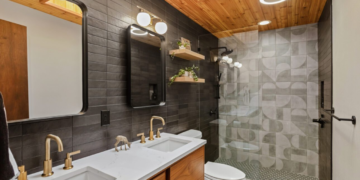Beverley Minster, located in the heart of Beverley, East Riding of Yorkshire, stands as a testament to architectural grandeur and historical significance. With its origins tracing back over 1,300 years, the Minster has undergone numerous transformations, each reflecting the evolving needs and technologies of its time. Among these advancements, the development of plumbing systems played a crucial role in maintaining the Minster’s structural integrity and supporting its daily functions.
The Early Years: Foundations and Water Management
In the 8th century, Saint John of Beverley established a monastery on the site where the current Minster now stands. This early Christian community would have relied on natural water sources, such as nearby rivers and springs, for their daily needs. While detailed records of the specific water management systems from this period are scarce, it’s likely that the monks utilised simple methods like wells and cisterns to collect and store water.
Medieval Innovations: Gutter Systems and Drainage
As the Minster evolved into a significant place of worship and pilgrimage, the necessity for effective water management became more pronounced. The medieval builders incorporated gutter systems and downpipes to channel rainwater away from the building’s structure. This not only protected the stonework from erosion but also prevented water ingress that could damage the interior, including the intricate wood carvings and misericords that adorn the Minster. The design of these systems would have been influenced by the architectural styles of the time, ensuring both functionality and aesthetic harmony.
Ritual Purity and Ablution Facilities
In medieval times, maintaining ritual purity was of utmost importance. The Minster’s design likely included provisions for ablutions and other purification rituals. While specific details are scarce, it’s plausible that designated areas were equipped with basins or small pools to facilitate these practices. The integration of such facilities would have required careful planning to ensure a consistent and clean water supply, highlighting the advanced understanding of water management by the Minster’s architects.

The Georgian Restoration: Advancements in Plumbing
The early 18th century brought significant changes to Beverley Minster. During the Georgian era, the Minster underwent substantial restoration work, including the installation of more sophisticated plumbing systems. Records indicate that by July 1722, the dome was completed, and plumbing contractors were involved in the restoration efforts. This period marked a transition from rudimentary water management methods to more structured and efficient systems, reflecting the technological advancements of the time.
Modern Restoration Efforts: Preserving the Past
In recent years, Beverley Minster has undergone significant restoration projects to preserve its architectural and historical integrity. One notable effort was the restoration of the 13th-century south lesser transept roof, which involved removing and recasting the lead, as well as repairing the timber and stonework. These restoration projects not only aim to maintain the Minster’s structural integrity but also provide insights into the historical plumbing systems that once operated within its walls.
The Role of Plumbers in Beverley Today
Today, Beverley is home to a number of skilled plumbers who play a vital role in maintaining and restoring the town’s historic buildings, including Beverley Minster. The expertise of these professionals ensures that both new and old plumbing systems are properly installed and maintained, with an understanding of the building’s heritage.
Plumbers in Beverley, like those in many towns with historic buildings, must balance the use of modern plumbing techniques with the need to preserve the original features of these structures. They ensure that modern systems are installed in a way that does not compromise the building’s integrity, making use of their knowledge of both contemporary plumbing systems and the historical architecture of the Minster.
Whether it’s routine maintenance or more complex restoration work, plumbers and heating engineers in Beverley are integral to the ongoing preservation of the Minster. Their expertise ensures that the building continues to meet the needs of both the clergy and visitors while also preserving the unique features that have made the Minster a revered historical site for centuries.

Conclusion
The history of plumbing in Beverley Minster reflects the broader evolution of water management practices, from the early days of the monastery to the present. From the simple wells and cisterns of the early Christian community to the more sophisticated systems installed during the Georgian era, each phase highlights the ingenuity and adaptability of those who have cared for this magnificent structure.
The plumbers in Beverley, both historically and today, play an important role in maintaining and restoring the Minster’s plumbing systems. Their work ensures that the Minster remains a functional and enduring symbol of the town’s rich heritage. Today, the skills of these professionals continue to serve the local community, helping to maintain both modern plumbing systems and the systems that are vital to preserving historical landmarks like Beverley Minster.
Whether for general maintenance or complex restoration work, the work of plumbers in Beverley ensures that the town’s historical buildings are preserved for future generations, keeping the town’s rich history alive while meeting modern needs.













